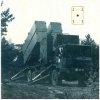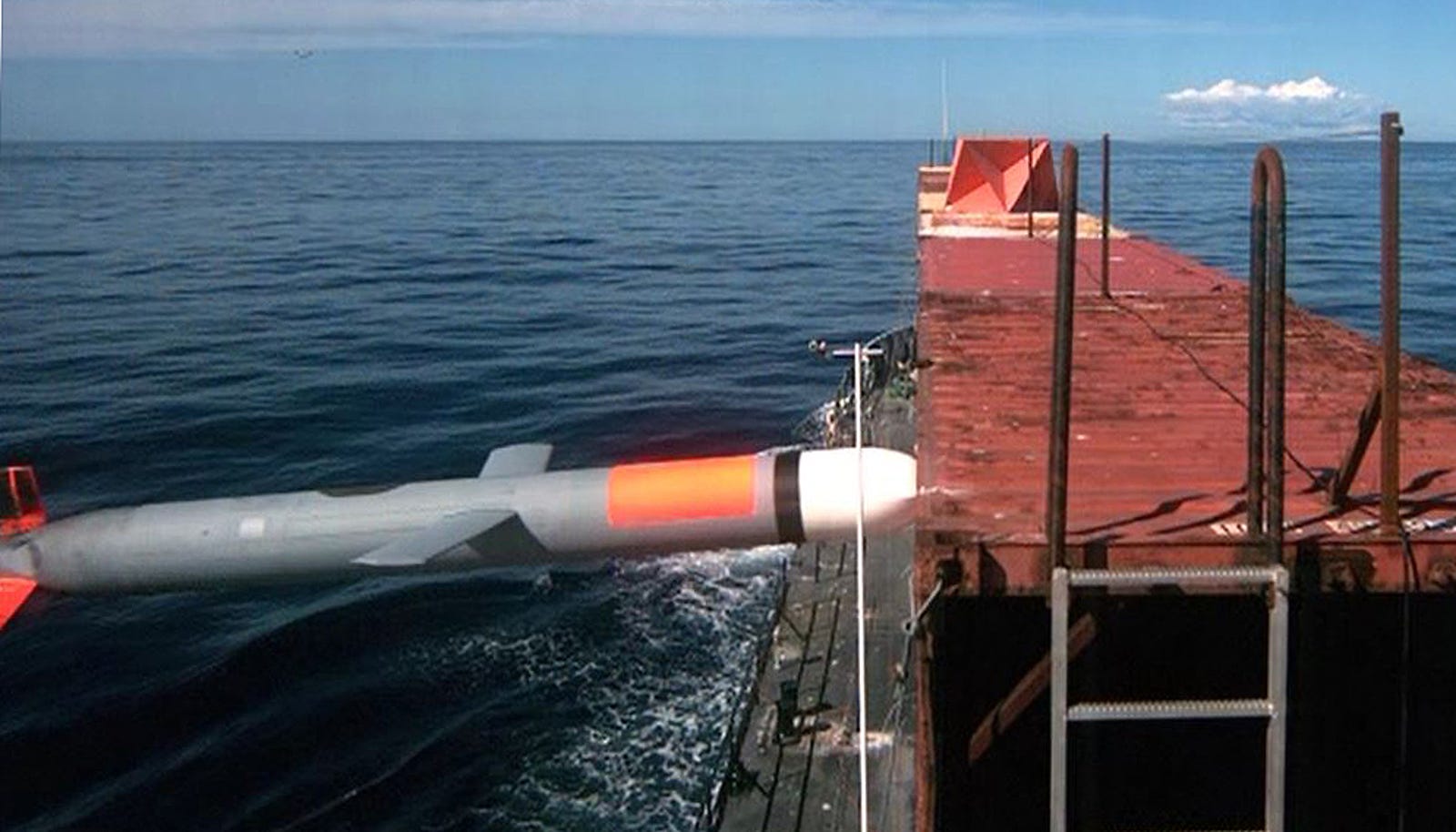Tyler Rogoway kirjoittaa miten hypoteettisesti uusin RGM-109 Maritime Tomahawk toimisi ASM-roolissa. Kirjoituksessa sivutaan lopussa myös LRASM:n roolia häiveohjuksena vs. Tommy. LRASM todennäköisesti käyttää samantyyppistä teknologiaa.
The Tactical Tomahawk Block IV, otherwise known as the "TacTom," is a 'netted' weapon, in that it can receive mid-course targeting updates, or even re-targeting commands, mid-flight. It can also be told to fly around 'pop up' air defense threats making it more survivable when it comes to operating in air space defended by an advanced integrated air defense systems. It can also throttle back its engine and loiter, prolonging its flight time as it searches for targets or as third party sensor systems try and find it a target. These third party sensor platforms include fighter jets, maritime surveillance aircraft, such as the
P-8 Poseidon and especially unmanned aircraft like the Navy's MQ-4C Triton, ships, satellites and potentially even other Tactical Tomahawks.
Here is a theoretical example of how a further developed TacTom could be used against a ship during battle:
A
MQ-4C Triton, the Navy's broad area maritime surveillance cousin of the RQ-4 Global Hawk, could be orbiting at 60,000 feet and some 500 miles in front of an American Carrier Strike Group. At the edge of its radar range, the MQ-4C detects a target 200 miles away, some 700 miles from American naval assets. The MQ-4C can use its inverse synthetic aperture radar to identify and classify the radar target it sees. It is deems it is an enemy frigate belonging to the enemy.
Still far outside that frigate's air defenses, the MQ-4C's mission commanders on the ground thousands of miles away contact the nearby US Navy Carrier Strike Group and tells them that they are tracking a hostile enemy target 700 miles from their position. The Carrier Strike Group's commanders quickly put an attack plan together, deciding to launch a pair of TacTom at the target due to its extreme range from the Carrier Group and close proximity to enemy shores.
A DDG-1000
Zumwalt Class destroyer, operating at the forward edge of the Carrier Strike Group due to its stealthy design and sensor fusion abilities, ripples off a pair of TacToms in the direction of the enemy frigate. Keep in mind, that the distance between it and the enemy are the same distance between New York and Chicago.
The missiles makes their way toward the target, with a flight time of an hour and a half in front of them. They have been programmed to accept mid-course targeting updates via satellite from the MQ-4C Triton that is orbiting between their launch point and the target itself. After an hour of flight time, the TacToms are closing in on their target but they passively sense an enemy surface to air missile battery coming online on an island near their flight path. The MQ-4C Triton also senses the SAM site's search radar coming online. This information is relayed to the DDG-1000 that fired the Tomahawks well over an hour ago. Mission commanders in the
ship's war room like Ship's Mission Center quickly order the missiles to fly around the outer engagement range of the SAM system, so that they are not detected or engaged.
As the missiles navigate at a safe distance around the enemy held island, controllers aboard the DDG-1000 order the TacToms to split up, with one loitering while the other makes a wide question mark shape path around the targeted frigate. This tactic will put the two missiles at an equal distance on opposite sides of the enemy ship, and with precise timing, the missiles will make simulations attack runs on the ship from completely opposite vectors. This makes defending the ship much more complicated and should overwhelm its air defense system operators.
It takes an extra 20 minutes for the TacTom to skirt the edges of the ship's defenses, but now, with both missiles at an equal distance from the target. They both drop down to very low altitude, just feet above the ocean, to make their final attack run on the enemy Frigate. Using their passive seekers, they begin to detect radar and other electromagnetic emissions emanating from the ship, which match the type of target the MQ-4C classified as hostile.
Once the missiles both crest the horizon from opposite directions, one of their milimetric wave radar seekers goes active and locks onto the ship. The ship tries to jam the missile's active seeker but it hops frequencies wildly. Both missiles are also feeding on the ship's own electromagnetic emissions for backup final targeting solution data. Like a fly in a spider's web, the more the ship tries to repulse the attack using jamming, the more directional energy the missiles have to 'feed on' for targeting.
With still only one of the missile's seekers being active, and its targeting data now being fed to the other missile, the ship's defenses are focused on just the active homing TacTom as it comes barreling over the horizon, the other staying silent as not to alert the crew. Just two miles out, the
ship's close in weapons system activates, spraying the active homing TacTom with tungsten perpetrators. The missile detonates just 500 yards off the ship's port side. The moment the TacTom with the active seeker goes quiet the silent TacTom approaching from the opposite side goes active. There is not enough time for the CIWS to engage it.
Just before slamming into the enemy ship, the missile's seeker takes a raw millimeter-wave radar 'picture' of its target and transmits it back to its controlling DDG-1000 destroyer. It will be used to assess the TacTom's deadliness as well as to provide a final 'proof of target attacked' for intelligence officers. The missile strikes the ship's superstructure at close to 500mph, detonating its massive warhead while careening through the spine of the ship, blowing the superstructure apart like a firecracker placed inside a tin can.
The MQ-4C, which has been moved closer to the targeted ship during the Tomahawks' mission, does not detect any more threats in the area and its controllers order it to descend down to two thousand feet to take full motion video of the burning ship with its MTS-B multi-spectral targeting system. This video is data-linked via satellite back to the DDG-1000 and the Carrier Strike Group. Within an hour the ship is totally engulfed in flames and listing heavily. Intelligence classifies the ship as a total loss.
Although this situation is hypothetical, it gives some kind of idea as to what a new and improved Tomahawk is capable of. Regardless of what new brains and sensors are packed inside, the Tomahawk lacks a stealthy airframe, which leaves it vulnerable to detection against an enemy with an advanced air defense network. Nor can it be launched by fighter-sized aircraft. This, along with an even more intelligent suite of passive and active sensors, has given
Lockheed's Long-Range Anti-Ship Missile (LRASM) a leg up when it comes to the Navy's next anti-ship missile, and
LRASM's capabilities continue to rapidly evolve.
https://foxtrotalpha.jalopnik.com/this-chase-planes-view-of-a-tomahawk-striking-a-ship-is-1684902149







